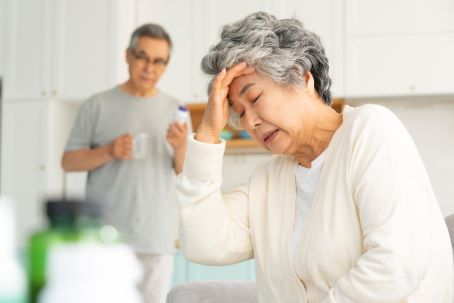Because of their ability to bear the horrific agony of childbirth, there is a longstanding myth that women have a higher pain tolerance. Contrary to popular belief, women are much more likely to experience chronic and severe pain than men, with a higher tendency to suffer from various painful conditions.
Why is it then, that females are less likely to receive pain treatment?
Painful conditions more prevalent in women
There is a physical reason why women may also feel pain more intensely − they have a lot of nerve, literally! Women average up to twice as many nerve fibres per square centimetre.
Certain pain conditions are more prevalent in the female population. For instance, an astounding 80-90% of diagnosed fibromyalgia cases are women.
Other common conditions that affect women to a greater extent include irritable bowel syndrome (IBS), rheumatoid arthritis, osteoarthritis, temporomandibular joint disorder (TMJ), chronic pelvic pain, and migraine headache.
What’s more, women suffer from female-specific troubles such as period pain (dysmenorrhoea) and the pains associated with diseases like endometriosis and adenomyosis.
As they approach perimenopause and menopause, some women may find that their pain either flares up or worsens.
One reason for this could be the sharp decline in estrogen levels, as estrogen has an anti-inflammatory effect. As there are estrogen receptors all over the body including the joints, it’s no surprise that a decline in hormone levels can exacerbate pain.
Why are females being undertreated?
Women across the world are less likely to receive pain treatment than men, and there are a few possible explanations for this unfortunate disparity. One theory is that gender stereotypes have a big role to play.
Because women are thought to be more vocal than males (who are thought to be more stoic), their complaints are more likely to be dismissed as exaggerated. As a result, when both genders express the same amount of pain, healthcare providers may consider female pain to be less intense.
Regrettably, there are many who do not take female pain as seriously as they should.
In a study published in the Journal of Pain, researchers looked at over 1,700 trials to see if there were any gender differences in pain treatment. Even when in the same degree of pain, the study found that women are less likely than men to receive pain medication.
On top of that, in cases where women do receive treatment, it is often woefully inadequate. Because females have a greater nerve density, they can experience pain more strongly and require different techniques and medicine dosages to get relief.
Why it’s not a good idea to ignore your pain
Pain is your body’s way of warning you that something is wrong, and disregarding it can have serious consequences, particularly if it lasts longer than three months.
Heavy bleeding and cramps during your period, for example, could be signs of serious disorders like endometriosis. Swollen and inflamed joints may be an indication of degenerative illnesses such as arthritis and connective tissue diseases.
The key to averting additional deterioration and harm in many types of disorders is early diagnosis by an experienced doctor.
Women frequently wait until they are in dire straits before seeking help. By that time, their condition may have deteriorated to the point where open surgery is unavoidable.
The effects of poor pain management
Pain has a detrimental effect on almost every facet of a patient’s life. When uncontrolled, chronic pain impedes one’s capacity to fulfil family, social, and career obligations, and hurts one’s emotions and mental wellbeing.
Chronic pain sufferers frequently experience social isolation, dependence on caregivers, and impaired relationships with friends and family. They are also four times more likely to experience depression or anxiety than those without pain.
With the ageing population in developed countries and a worldwide increase in chronic disease, the prevalence of untreated pain is continuing to grow. In Singapore, we are seeing a drastic rise in chronic health conditions. There is also an increasing incidence of musculoskeletal disorders among office workers caused by poor workplace design or prolonged sedentary work.
According to a 2018 MOH-NUS study, joint pain, arthritis, and rheumatism or nerve pain are among the three most common chronic health problems in Singapore. For these painful diseases, early diagnosis and treatment can postpone or even avoid the onset of complications and permanent damage to the body. Patients would also avoid incurring substantial medical costs linked to hospitalisation.
Women need the right pain treatment
At Singapore Paincare, we believe that nobody should be living in pain. We’ve been administering pain treatments since 2007 and have helped many patients restore body function, slow down the effects of degeneration, and improve their quality of life.
With experts from multiple disciplines, we can take a holistic approach and provide pain treatment solutions that are tailored to each patient’s preferences.
Led by Dr Bernard Lee, our team of pain specialists, paincare doctors, surgeons, TCM physicians, physiotherapists, and psychologists, provide truly integrated and comprehensive pain management solutions for our patients.
Many of our Minimally Invasive Procedures such as Myospan injections are one-off treatments without any significant downtime or risk that can be administered at our GP clinics. In most cases, repeated sessions are not required to maintain good pain relief.
Don’t continue to suffer in silence from degenerative pain conditions – we are here to help you.
_
Our patients enjoy access to our network of General Practitioner (GP) clinics island-wide for convenient primary care and pain relief services. Click here to find a clinic near you. Walk-ins are always welcome.







